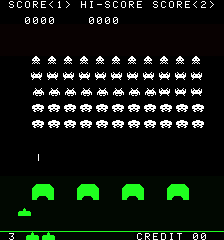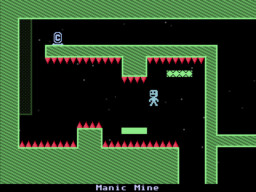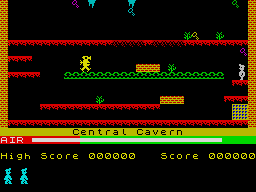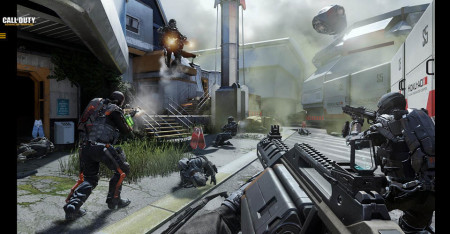This is my thirteenth monthly Patch Wednesday post where I discuss a question about video games that I think is unanswered, unexplored, or not posed yet. I will propose my own tentative ideas and invite comments.
The series is called Patch Wednesday to mark the sometimes ragtag and improvised character of video game studies.
I recently spoke at the What is an Image conference, April 9-10 2015 at the University of Copenhagen. I had the opportunity to think about what characterizes the on-screen images that we see in video games.

The first point is that video games do not ship as sets of images, they are rather image generators.
For example, how many possible images can Space Invaders generate? Here is a low ballpark number: each alien can be either alive or dead. With 55 aliens, this is 2^55 possibilities. The ship can be in 200 positions. There can be 2 shots on the screen at a time (at 200 * 200 positions), hence 2^55 * 200 * (200*200) * (200*200) =11,529,215,046,068,469,760,000,000,000 = 1.15e+28 possible positions (this is not counting UFOs, scores or shelters, and conversely not discounting shot order).
By comparison, there are only 10^22 stars in the universe, and Space Invaders can therefore generate at least a million different images for every star in the universe.
This has a number of implications. Consider how this has played out, especially in the last 10 years.
We have many games like Call of duty: Advanced Warfare, a military shooter promoted on the fact that it is a next-generation game, running on next generation consoles, offering new graphics and game options, only made possible by the new generation of consoles (“HARNESSES THE FIRST THREE-YEAR, ALL NEXT-GEN DEVELOPMENT CYCLE IN FRANCHISE HISTORY.”)
A game like this demonstrates a particular traditional way of evaluating video games, one that comes from the fact that video games are image generators.
In traditional mainstream and AAA advertising and reviews, the image on screen is seen as embodying the presence of the underlying technology. The played game is evaluated for its ability to utilize (say) the PlayStation 4 graphical abilities. With every new console generation, we have then launch games that are criticized because they do not fully utilize the new console’s abilities.
We can compare this to Walter Benjamin’s notion of aura in The Work of Art in the Age of Mechanical Reproduction, where he talks about mechanical reproduction as threatening the sense of authenticity and of the original. For video games it mostly makes no sense to talk of an original game, but with AAA games we may experience a sense of presence of the hardware while playing.
We can see the on-screen image as carrying an aura of underlying computation, of ongoing calculations, shaders, of the hardware. (And it literally comes from that, of course.) This is probably not what Benjamin would think of as an aura, but I think it is being treated as such in the press and in game culture. We can also read promo material and articles emphasizing that a particular screenshot, image, was made in-engine.
In short, modern big-budget video game images are evaluated not just in terms of which pixels are physically on the screen, but according to whether they were generated in real-time, using the game machine hardware.
A game, in this view, is seen as good if it makes the invisible architecture of the game machine visible. This was the dominant way of promoting video games for a while.
Independent Games
But let’s think about the counter-movement that is independent games. (I have written about indie games visuals in more detail here.) Here is the 2010 VVVVVV:

VVVVVV embodies a common “indie” nostalgia, what I call a representation of a representation, where modern technology is used to emulate older low-tech visual styles. Independent games are sometimes promoted with an idea of going back to the beginnings of video game history, when games were made by one or two people, rather than by the giant 100-million dollar teams of top games these days. (And with VVVVVV there is a specific nostalgia for Spectrum/C64 games such as Manic Miner).
Compare then the 2010 VVVVVV to the actual 1983 Manic Miner:

Though VVVVVV and Manic Miner are in many ways similar, the low-resolution graphics of Manic Miner were at the time understood to be a technological marvel; a demonstration of hardware abilities, and claiming the type of technological presence I talked about before with AAA games.
This shows how the very same video game images would be evaluated in entirely different ways in 1984 and in 2010. Whereas the 1984 version of a game would be a technological marvel, a contemporary game with identical on-screen pixels would be a revolt against the technology-centric way of evaluating video games.
This is the shift that independent games claim: to move away from the focus on the technology as provider of the images that we are playing with, to a focus on deliberate sampling of historical styles, and by doing so, toward evaluating a game and its images as having a personality that comes from its creator(s), to which we then have a personal connection.
We could then criticize this idea of the independent developer as being quite romantic, but that is another discussion.

